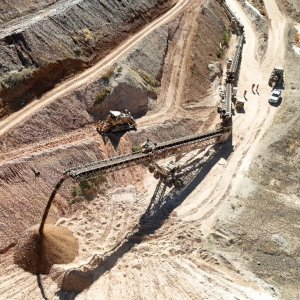Planning: The Solution to the Infrastructure Gap

STORY INLINE POST
When PPPs first came to the forefront of the infrastructure industry, they were held up as the cure for Mexico’s infrastructure woes. But according to Ignacio García de Presno, Lead Partner of Global Infrastructure and Projects Group of KPMG, projects must be analyzed individually to know if a PPP is actually the most suitable option. “There are a number of different PPP modalities, from concessions to service agreements,” he says. “All could work, and some better than others. But there is a perception that they can fix everything and the issue is that they were not designed to do everything.”
García de Presno says that people often tend to forget that PPPs ultimately need funding from the public sector. “It is like using a credit card rather than a paycheck,” he says. “The government must decide whether to use a PPP and pay small amounts over many years or whether to pay upfront through traditional public works.” He says that, even then, it is not necessarily the best option as the government also must contribute funds unless the modality is a concession and this is not always possible.
A main problem with the government tendering projects is that it starts with an idea rather than a fully formulated project, García de Presno adds. By the time the developer has won the bid and started construction, several unforeseen issues inevitably arise as a result of poor due diligence and planning. “Ninety percent of the time, the project will begin before fundamental aspects like soil conditions, archaeological and protected land issues and rights of way are properly analyzed, additionally, rule of law and organized crime also interfere with the development of the projects,” he says. “In this regard, the perception of projects consistently coming in late and over budget is wrong; the issue is that the budget was not planned correctly from the outset to cover these fundamentals.”
In terms of planning, he believes this should be done years or even decades in advance. He uses the example of the NAIM airport project, which is scheduled to be completed by 2025. “We should already be thinking about the roads, access and public transport links,” he says. “The problem is that local leaders like governors and mayors want 100 percent of the credit for projects and they are reluctant to start a process that will be completed under another administration.” García de Presno says the government tends to think it should make its mark and redesign the entire country in just one six-year administration. “The current administration has thought more about the long term, with initiatives like the Energy Reform, which will not reap benefits for many years or the Red Compartida, which will be completed over the next 10 years.” Similarly, the Durango-Mazatlan highway was initiated during a previous administration and was completed under the current administration.
To better stimulate PPP development of infrastructure, García de Presno believes the root that must be addressed is tax reform. “Government does not have the money to spend on infrastructure and the country’s tax structure is very limited,” he says. Instead, Mexico funds its infrastructure development through concessions. García de Presno warns that, while this works for roads, it could not be applied easily to a country like Mexico for public services such as water or waste management. “We need to stop using water as a political hostage,” he says. “Yes, water itself is a basic human right but having it delivered to our homes is not. The dam and purification facilities cost money.” While water concessions are used successfully in Aguascalientes, Saltillo and Cancun, he does not believe this model can be applied successfully in several areas of Mexico City because resistance to pay for the service would be too great.
“Often, countries like the Netherlands are referenced as models because those populations have access to free education, free water and other public services as well,” García de Presno explains. “What is not explained is that, in the Netherlands, the highest tax bracket is 52 percent, while the lowest is 37 percent. This is how these countries can afford to offer better services to the people.” He says in Mexico these examples are used to demand the same system without paying the same levels of tax. “On paper it is a simple discussion but in practice it is very complicated to reconcile agendas across all governments and states,” he says. “But we can start with a comprehensive tax reform.”
























